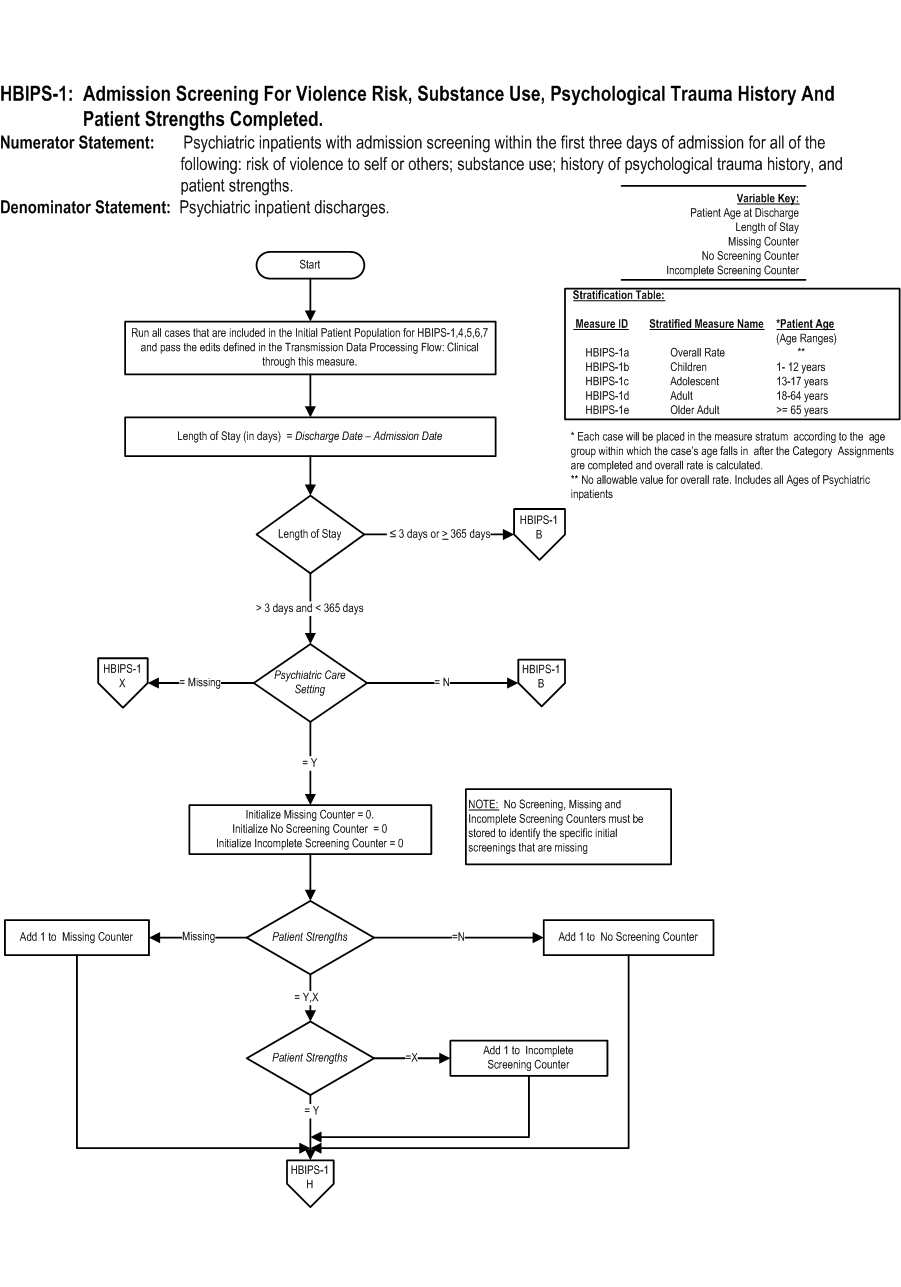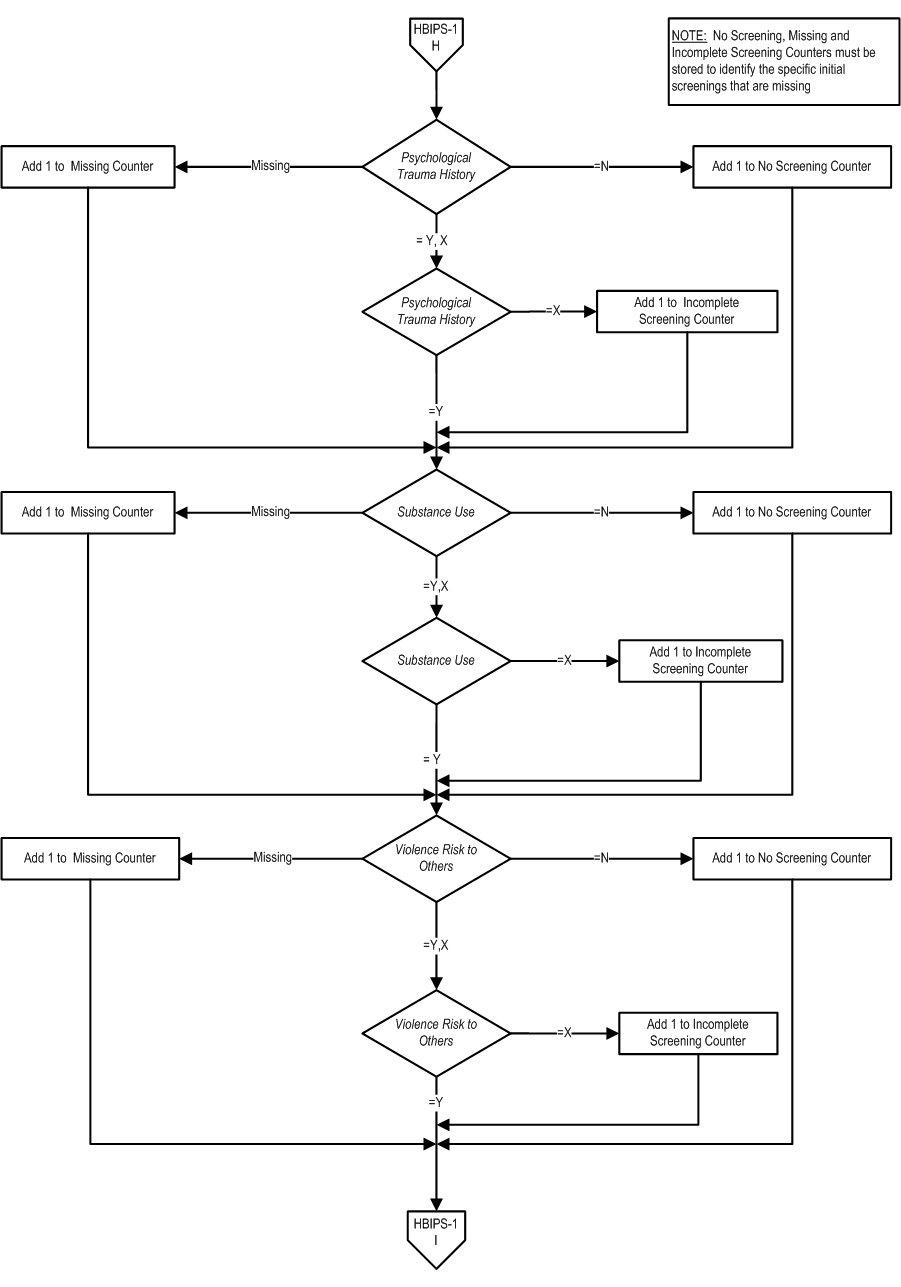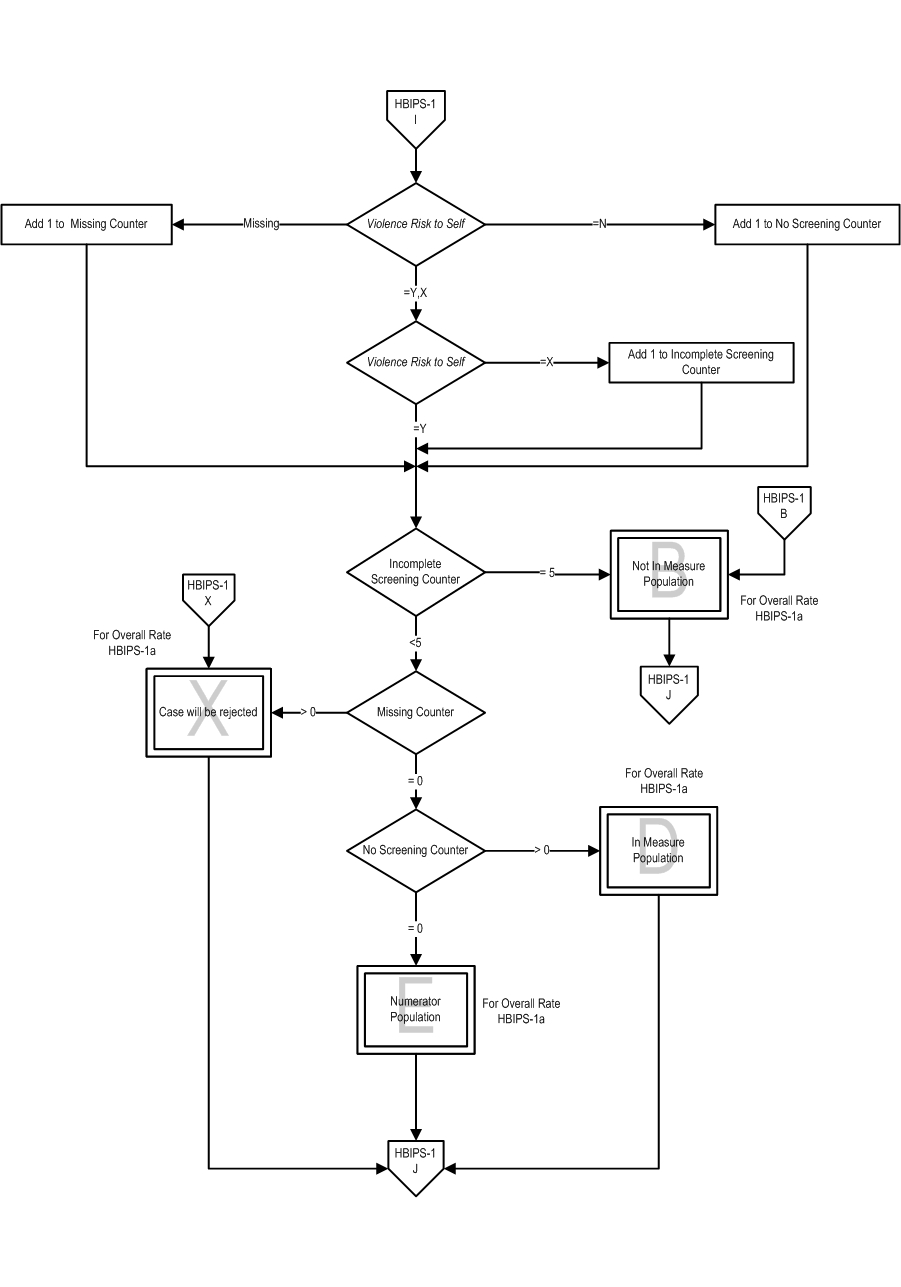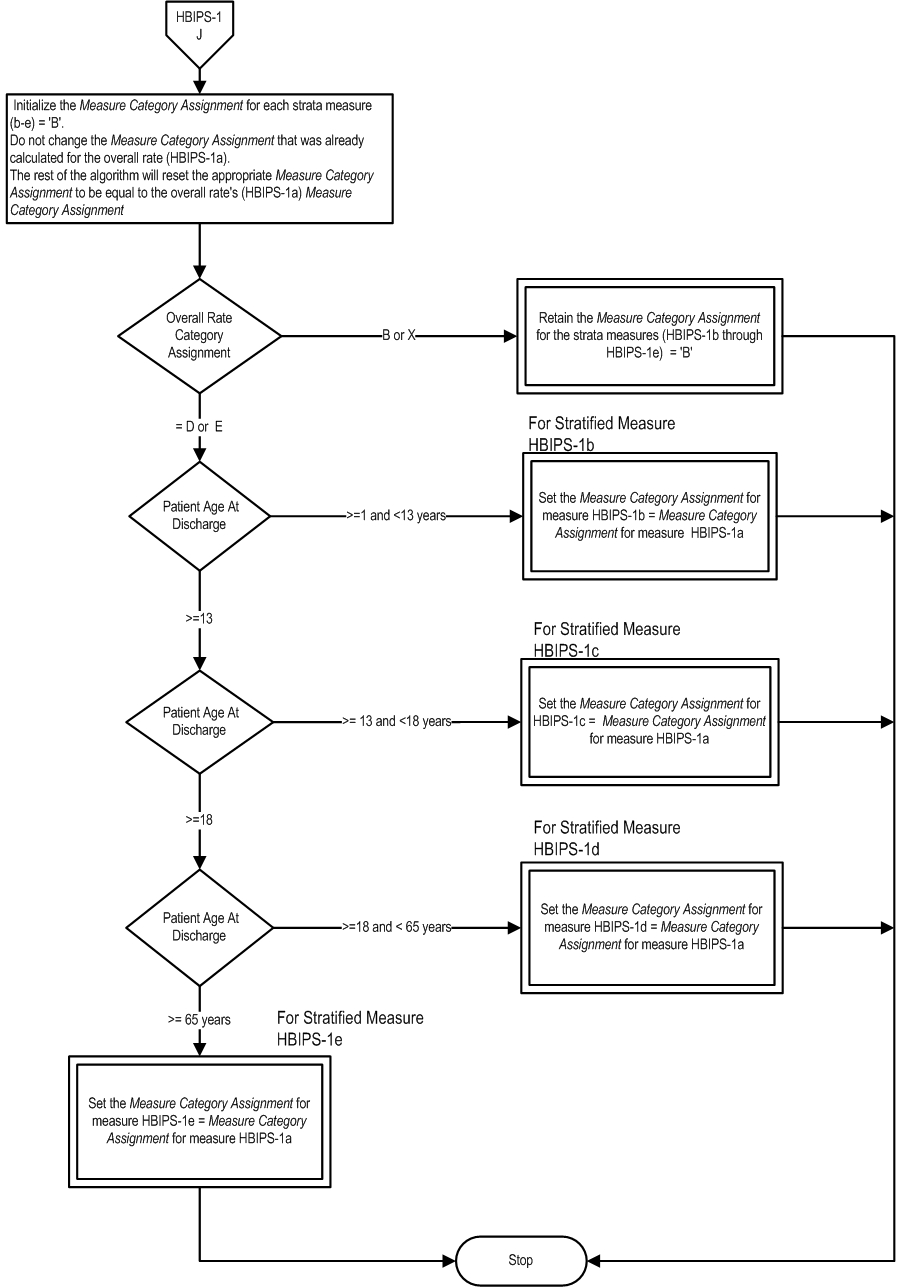Release Notes:
Measure Information Form
Version 2010B
Measure Information Form
Measure Set: Hospital Based Inpatient Psychiatric Services (HBIPS)
Set Measure ID: HBIPS-1
| Set Measure ID |
Performance Measure Name |
| HBIPS-1a |
Admission Screening- Overall Rate |
| HBIPS-1b |
Admission Screening- Children (1 through 12 years) |
| HBIPS-1c |
Admission Screening- Adolescent (13 through 17 years) |
| HBIPS-1d |
Admission Screening- Adult (18 through 64 years) |
| HBIPS-1e |
Admission Screening- Older Adult (≥65 years) |
Performance Measure Name: Admission Screening for Violence Risk, Substance Use, Psychological Trauma History and Patient Strengths completed
Description: Patients admitted to a hospital-based inpatient psychiatric setting who are screened within the first three days of admission for all of the following: risk of violence to self or others, substance use, psychological trauma history and patient strengths.
Rationale: Substantial evidence exists that there is a high prevalence of co-occurring substance use disorders as well as history of trauma among persons admitted to acute psychiatric settings. Professional literature suggests that these factors are under-identified yet integral to current psychiatric status and should be assessed in order to develop appropriate treatment (Ziedonis, 2004; NASMHPD, 2005). Similarly, persons admitted to inpatient settings require a careful assessment of risk for violence and the use of seclusion and restraint. Careful assessment of risk is critical to safety and treatment. Effective, individualized treatment relies on assessments that explicitly recognize patients’ strengths. These strengths may be characteristics of the individuals themselves, supports provided by families and others, or contributions made by the individuals’ community or cultural environment (Rapp, 1998). In the same way, inpatient environments require assessment for factors that lead to conflict or less than optimal outcomes.
Type of Measure: Process
Improvement Noted As: Increase in the rate
Numerator Statement: Psychiatric inpatients with admission screening within the first three days of admission for
all of the following: risk of violence to self or others; substance use; psychological trauma history; and patient strengths
Included Populations: Not applicable
Excluded Populations: None
Data Elements:
Denominator Statement: Psychiatric inpatient discharges
Included Populations:
- Patients with ICD-9-CM Principal or Other Diagnosis Codes for Mental Disorders as defined in Appendix A, Table 10.1
Excluded Populations:
- Patients for whom there is an inability to complete admission screening for Violence Risk, Substance Use, Psychological Trauma History and Patient Strengths within the first three days of admission
- Patients with a Length of Stay ≤ 3 days or ≥ 365 days
Data Elements:
Continuous Variable Statement:
Included Populations:
Excluded Populations:
Data Elements:
Risk Adjustment: No.
Data Collection Approach: Retrospective data sources for required data elements include administrative/billing data and medical records.
Data Accuracy: Hospitals may wish to implement periodic audits to monitor and ensure data accuracy.
Measure Analysis Suggestions: The data elements for each of the five initial assessment elements provide an opportunity to assess each component individually. However, completion of all five initial assessment categories is required for this measure.
Sampling: Yes. For additional information see the Sampling Section.
Data Reported As: Aggregate rate generated from count data reported as a proportion.
Selected References:
- American Psychiatric Association. (2003). Practice guidelines for psychiatric evaluation of adults. Arlington (VA): American Psychiatric Association. http://www.guideline.gov/summary/summary.aspx?doc_id=9317
- Lyons JS, Uziel-Miller ND, Reyes F, Sokol PT (2000). Strengths of children and adolescents in residential settings: Prevalence and associations with psychopathology and discharge placement. Journal of the American Academy of Child & Adolescent Psychiatry, Vol 39(2): 176-181.
- NASMHPD. (2005) Position Statement on Services and Supports to Trauma Survivors. Alexandria, VA: NASMHPD.
- Rapp CA (1998). The strengths model: Case management with people suffering from severe and persistent mental illness. London: Oxford University Press.
- Ruiz P (2004). Addressing Culture, Race, & Ethnicity in Psychiatric Practice. Psychiatric Annals, Vol 34(7): 527-532.
- Ziedonis DM (2004). Integrated treatment of co-occurring mental illness and addiction: Clinical intervention, program, and system perspectives. CNS Spectrums 9(12): 892,894-904,925.
Measure Algorithm:




 Attach file
Attach file




 Attach file
Attach file